
Nature Communications
Scope & Guideline
Unleashing the Potential of Interdisciplinary Research
Introduction
Aims and Scopes
- Multidisciplinary Research:
The journal covers a wide range of disciplines, including biology, chemistry, physics, environmental science, and materials science, making it a platform for cross-disciplinary research. - Innovative Methodologies:
Nature Communications emphasizes the use of innovative methodologies and cutting-edge technologies in research, including advanced imaging techniques, omics approaches, and machine learning applications. - Focus on Impactful Scientific Contributions:
The journal prioritizes studies that contribute to the advancement of science and technology, particularly those that address pressing global challenges such as climate change, health crises, and sustainability. - Open Access Publishing:
As an open access journal, Nature Communications ensures that published research is freely accessible to the global scientific community and the public, promoting transparency and wider dissemination of knowledge. - Collaboration and Interdisciplinary Approaches:
The journal encourages collaborative research efforts that combine expertise from different scientific fields to tackle complex issues, reflecting the interconnected nature of modern scientific challenges.
Trending and Emerging
- Artificial Intelligence and Machine Learning Applications:
There is a growing trend towards the integration of AI and machine learning in various research fields, from genomics to materials science, indicating a shift towards data-driven methodologies. - Sustainable and Green Technologies:
Research focused on sustainability, including renewable energy, waste reduction, and eco-friendly materials, is increasingly prominent, reflecting global priorities in combating climate change. - Advanced Therapeutics and Precision Medicine:
Emerging themes in personalized medicine, including gene editing technologies like CRISPR and novel therapeutic strategies for complex diseases, are trending as researchers seek targeted and effective treatments. - Microbiome Research:
The study of microbiomes, particularly their role in health and disease, is gaining traction, showcasing the importance of microbial communities in various biological processes. - Nanotechnology and Materials Science:
Research involving nanomaterials and their applications in electronics, medicine, and energy storage is increasingly prevalent, demonstrating the interdisciplinary nature of modern science.
Declining or Waning
- Traditional Medicinal Chemistry:
Research focused on traditional medicinal chemistry approaches has decreased, likely due to the rise of biotechnological and genomic methods that offer more innovative solutions for drug discovery. - Basic Environmental Studies:
Papers solely dedicated to basic environmental studies without a clear application or technological advancement are less frequently published, as the journal shifts towards studies with direct implications for policy and management. - Conventional Genetic Studies:
The prevalence of conventional genetic studies, particularly those lacking novel methodological advancements or integration with other omics data, appears to be waning as interest grows in multi-omics and systems biology approaches. - Descriptive Ecological Studies:
There is a noticeable reduction in purely descriptive studies in ecology, as the field moves towards more hypothesis-driven research that incorporates experimental and theoretical frameworks. - Philosophical or Theoretical Papers:
Papers that are predominantly philosophical or theoretical without substantial empirical data are becoming less common, indicating a preference for data-driven research.
Similar Journals

iScience
Shaping the future of science with every publication.iScience, published by Cell Press, is a premier open-access journal committed to advancing the field of multidisciplinary sciences. Since its inception in 2018, iScience has established itself as a leader in the academic community, with an impressive Scopus ranking of #17 out of 171 in its category, placing it in the 90th percentile. The journal aims to foster interdisciplinary collaboration by disseminating high-quality research across diverse scientific domains, thereby providing a platform for innovative approaches to complex challenges. iScience is dedicated to open access, ensuring that research findings are readily available to a global audience, enhancing visibility and accessibility for scholars, professionals, and students alike. With its ongoing commitment to excellence and impact, iScience plays a crucial role in shaping the future of scientific inquiry.
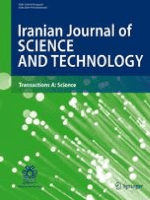
Iranian Journal of Science and Technology Transaction A-Science
Connecting Researchers for Impactful Discoveries.Iranian Journal of Science and Technology Transaction A-Science, published by SPRINGER INT PUBL AG in Switzerland, stands as a significant platform for the dissemination of innovative research across a multitude of disciplines, including Agricultural and Biological Sciences, Chemistry, Earth and Planetary Sciences, Engineering, Mathematics, and Physics and Astronomy. With an established HIndex and a solid ranking in Scopus—featuring impressively in the 90th percentile for General Mathematics and maintaining strong positions in other scientific categories—the journal promotes high-caliber scholarly work that influences both academic and professional communities. This journal operates under an Open Access model, thus maximizing the accessibility of research findings while fostering international collaboration and knowledge exchange. Aiming to bridge gaps in science and technology, the journal invites researchers, professionals, and students alike to contribute to its dynamic and evolving discourse, thus enhancing the rigor and richness of scientific exploration.
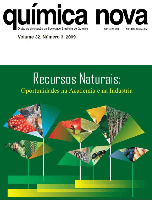
QUIMICA NOVA
Fostering Collaboration and Discovery in ChemistryQUIMICA NOVA is a premier open access journal published by the SOC BRASILEIRA QUIMICA, dedicated to advancing the field of chemistry through the dissemination of high-quality research. Since its inception in 1997, the journal has provided a platform for innovative studies and scientific dialogue, making it a valuable resource for researchers, professionals, and students alike. With a focus on miscellaneous areas of chemistry, QUIMICA NOVA occupies a notable position with a 2023 Scopus ranking of #289 in General Chemistry, representing the 29th percentile among its peers. The journal's commitment to accessible science is underscored by its open access model, enabling broader readership and engagement. Hailing from Brazil, QUIMICA NOVA continues to contribute significantly to the global chemistry community, providing insights that drive progress and foster collaboration across disciplines.

National Science Review
Advancing multidisciplinary research for a brighter tomorrow.National Science Review, published by Oxford University Press, stands as a premier open-access journal dedicated to advancing the frontiers of multidisciplinary scientific research. With an impressive impact factor reflective of its high citation rates and a Q1 ranking within its category as of 2023, it ranks #5 out of 171 journals in its field, placing it in the 97th percentile of Scopus' multidisciplinary rankings. Since its inception in 2014, the journal has evolved into a pivotal platform for the dissemination of innovative findings across various scientific disciplines, attracting contributions from leading researchers globally. Accessible to both academics and professionals alike since its transition to open access in 2020, the journal not only promotes collaboration but also ensures the broad dissemination of knowledge critical for tackling pressing global challenges. Residing in the historic city of Oxford, United Kingdom, it continually seeks to contribute to the global conversation on scientific advancements and their implications for society, making it an indispensable resource for anyone at the intersection of science and innovation.
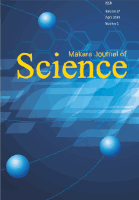
Makara Journal of Science
Championing quality research for a sustainable future.Makara Journal of Science, published by UNIV INDONESIA, is an esteemed open-access journal that has been contributing to the field of scientific research since 2007. With an ISSN of 2339-1995 and E-ISSN of 2356-0851, this journal plays a crucial role in disseminating knowledge across various disciplines including Agricultural and Biological Sciences, Biochemistry, Genetics and Molecular Biology, Chemistry, Materials Science, and Physics and Astronomy. The journal operates out of Depok, Indonesia, and aims to foster international collaboration and bridge the gap between theory and practice through high-quality research publications. As of 2023, it holds a Q3 ranking in Agricultural and Biological Sciences and Q4 in several other categories, reflecting its steady growth and dedication to quality. Researchers, students, and professionals can access a wealth of pioneering studies that not only deepen understanding in their respective fields but also broaden interdisciplinary dialogue within the global scientific community. Join your peers and contribute to the ongoing discourse in this vital area of scientific exploration.
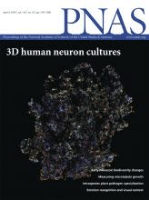
PROCEEDINGS OF THE NATIONAL ACADEMY OF SCIENCES OF THE UNITED STATES OF AMERICA
Connecting Ideas, Inspiring DiscoveriesPROCEEDINGS OF THE NATIONAL ACADEMY OF SCIENCES OF THE UNITED STATES OF AMERICA (PNAS) is a premier multidisciplinary journal published by the National Academy of Sciences, dedicated to the publication of innovative research across a wide array of scientific disciplines. With an impressive impact factor and ranked within the top 5% of journals in its field (Scopus Rank #8/171), PNAS epitomizes excellence in scientific scholarship since its inception in 1945. The journal fosters the dissemination of groundbreaking scientific discoveries, offering vital insights and advancements that impact both academia and industry. Although it operates under a subscription model, PNAS remains a critical resource for researchers, professionals, and students striving for knowledge in various scientific domains. Its rigorous peer-review process and commitment to high-quality publications ensure that it continues to serve as an authoritative source of information and inspiration within the global scientific community.

Machine Learning-Science and Technology
Pioneering research at the cutting edge of AI and technology.Machine Learning-Science and Technology is a premier open-access journal published by IOP Publishing Ltd, dedicated to advancing the field of artificial intelligence, human-computer interaction, and software development. Since its inception in 2020, this innovative journal has established itself as a critical resource for researchers, professionals, and students alike, achieving a commendable Q1 ranking across multiple categories in 2023. With an impressive Scopus ranking—#70 out of 407 in Computer Science Software, #26 out of 145 in Human-Computer Interaction, and #73 out of 350 in Artificial Intelligence—it provides a platform for cutting-edge research and significant advancements in machine learning technologies. Accessibility as an open-access journal since its launch ensures that the latest findings are freely available to a broader audience, fostering collaboration and knowledge-sharing within the scientific community. The journal aims to cover a wide spectrum of topics within its scope, encouraging submissions that push the boundaries of what is possible in machine learning applications. By fostering an environment of innovation, Machine Learning-Science and Technology stands at the forefront of this rapidly evolving field, shaping the future of technology and its interaction with society.
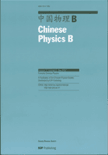
Chinese Physics B
Illuminating the path of scientific discovery in physics.Chinese Physics B, published by IOP Publishing Ltd, is a distinguished journal in the field of Physics and Astronomy, offering a platform for researchers to disseminate cutting-edge studies and advancements. With an ISSN of 1674-1056 and an E-ISSN of 2058-3834, this journal emphasizes open access, ensuring that groundbreaking research is readily available to a global audience. Reflecting its commitment to quality, Chinese Physics B is categorized in the Q3 quartile (2023) in its subject area and ranks 118 out of 243 among its peers in general physics and astronomy according to Scopus, placing it in the 51st percentile. Publishing since 2008, the journal not only maintains a rigorous peer-review process but also aims to foster collaboration among academics in various physics disciplines. With its base in the United Kingdom, Chinese Physics B remains a crucial resource for those seeking to stay abreast of developments in the diverse world of physics.

Iranian Journal of Science
Elevating Research Standards in the Scientific CommunityThe Iranian Journal of Science, published by Springer International Publishing AG, serves as a vital platform for researchers and professionals across a broad spectrum of scientific disciplines. With its focus on general chemistry, agricultural and biological sciences, earth and planetary sciences, mathematics, and physics and astronomy, this journal provides an open-access outlet for innovative and groundbreaking research, facilitating knowledge sharing in the scientific community. Despite its recent establishment from 2023, it is building a reputation for academic rigor, as evidenced by its current Scopus rankings, which position it within the lower percentiles of its field. Researchers interested in interdisciplinary studies will find it increasingly relevant as it aims to enhance scientific discourse across traditional boundaries. Operating out of Germany, this journal seeks to contribute significantly to science by publishing quality research, reinforcing its objective of fostering a collaborative academic environment. As the journal continues to grow, it is poised to become a critical resource for scholars, students, and professionals alike.

MethodsX
Enhancing effectiveness in research through innovative methodologies.MethodsX is a premier peer-reviewed journal published by Elsevier, dedicated to advancing the field of applied methods across various disciplines, particularly in Clinical Biochemistry and Medical Laboratory Technology. Since its inception in 2014, this Open Access journal has fostered innovation by allowing researchers to share and access high-quality methodologies designed to enhance reproducibility and effectiveness in research practices. Based in the Netherlands, MethodsX has achieved an impressive ranking in the Scopus database, placing in the top 78th percentile among multidisciplinary journals. The journal is committed to providing researchers, professionals, and students with a platform to disseminate new techniques and strategies, ensuring that groundbreaking methods are readily available to the global scientific community. With a focus on fostering collaboration and interdisciplinary research, MethodsX aims to bridge gaps across various scientific domains and empower future advancements until its converged years in 2024.